When choosing a bathtub, besides considering factors like price, size, and color, another crucial aspect to focus on is its shape. This not only affects the aesthetic appeal but more importantly, the comfort of your soaking experience. Currently, the mainstream bathtub shapes in the market include circular, square, oval, egg-shaped... So, which one is the most comfortable and suitable for your home decor style? Let's explore this topic together with Giving Tree Home!
Common Bathtub Shapes
Common Styles
Round
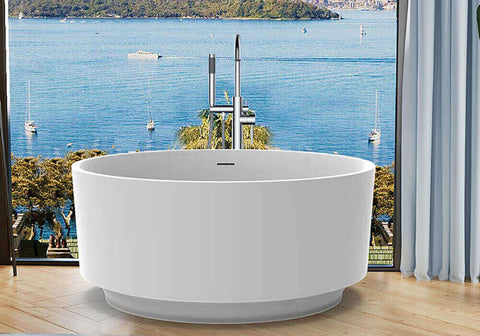
Features:
Circular edges and basin, typically installed in the center of a space rather than a corner.
Pros:
Highly distinctive and adds character, avoiding a cramped atmosphere.
Curved edges contribute to a rounded, non-sharp bathroom design.
Cons:
May result in some space wastage and not suitable for small bathrooms.
You may not be able to comfortably recline even with the use of a bathtub pillow.
Rectangular
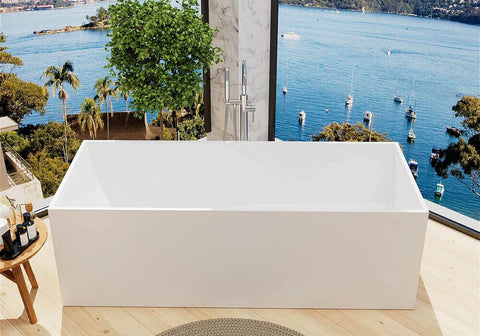
Features:
A more traditional design characterized by straight edges.
Pros:
Optimal utilization of bathroom space, seamlessly fitting against walls.
Offers a wider range of choices including freestanding, alcove, and wall-mounted options.
Sufficient interior space suitable for users who enjoy long soaking sessions.
Cons:
Lacks uniqueness and may make bathroom decor appear ordinary.
Sharp edges may cause discomfort.
Oval
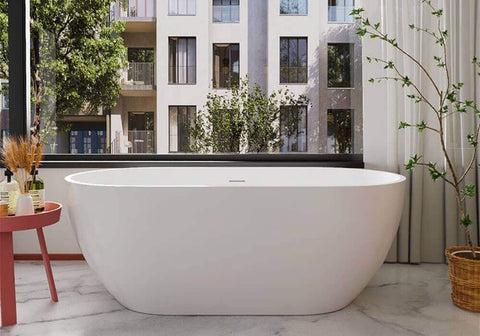
Features:
A shape between circular and rectangular, with curved edges.
Pros:
Elegant appearance with a modern design aesthetic.
Provides spacious soaking space while adhering to ergonomic design principles.
Cons:
Limited variety in the market, with fewer options for size and style.
Unique Styles
Single Slipper

Features:
One end of the bathtub is higher than the other, resembling a slipper.
Pros:
Provides ergonomic support for reclining and soaking.
Offers a variety of style options including modern or vintage, clawfoot or flat-bottomed.
Cons:
Difficult to appeal to the majority's aesthetic preferences.
Limited to single-person soaking.
Double Slipper
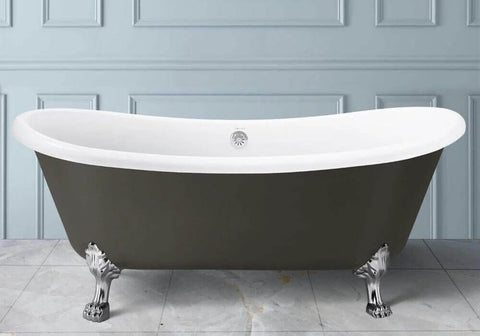
Features:
Both ends of the bathtub are higher than the middle, resembling slippers, typically supported by claw feet at the bottom.
Pros:
Larger double slipper tubs allow for simultaneous soaking for two people.
Classic design lends a retro vibe to the overall bathroom aesthetic.
Cons:
Most double slipper tubs belong to the clawfoot bathtub series and require additional floor reinforcement due to the reliance on claw feet for support.
Curve
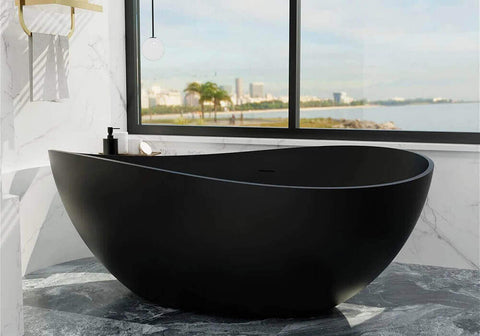
Features:
Curved edges around the bathtub rim, with a curved body.
Pros:
Provides a modern and artistic appearance for the bathroom.
Typically larger in size, suitable for users who prefer deep soaking experiences.
Cons:
Limited availability and variety compared to more traditional shapes.
Cleaning may be more challenging due to complex curves.
How to Choose the Most Suitable Bathtub Shape
When selecting the right bathtub shape, several factors prompt people to choose one bathtub over another:
- Bathroom Space
- Visual Aesthetics
- Ergonomics
- Functionality
Starting with bathroom space, if your bathroom area is relatively small, then the most suitable option might be a rectangular bathtub. Its geometric shape and straight edges allow it to be easily installed in cramped spaces, corners, or against walls, unlike round bathtubs, which cannot snugly fit into corners and lack straight edges to align along walls. However, for users with larger bathroom spaces, the concern shifts from bathtub shape to size, as smaller bathtubs might leave the bathroom feeling empty.
Visual aesthetics vary from person to person, as beauty is subjective. There is no standard to determine which design is more visually appealing than another, as it depends on the style you want for your bathroom decor. If you prefer a classical style, then a rectangular shape is recommended, as it emphasizes simple lines, edges, and geometric shapes. On the other hand, for a modern style, consider round, oval, or egg-shaped bathtubs, as these designs create a sleek, contemporary aesthetic and offer more color options.
When it comes to ergonomics, consider factors such as body size, age, and physical condition. For instance, for elderly individuals, it is not advisable to use a double slipper bathtub, as most of them belong to the clawfoot bathtub category and have a greater height from the ground. For larger individuals, round bathtubs are more convenient, as width is less of a concern. Additionally, for users who enjoy long soaks, a bathtub with curved back support is ideal for maintaining a natural spine curve.
Finally, functionality is a crucial consideration. Most people do not purchase a bathtub solely based on aesthetics; it must also be suitable for the bathroom and support common accessories. Rectangular bathtubs usually do not have issues with this, as they have flat edges and sides where bathtub components can be easily installed. However, oval bathtubs may lack flat surfaces, and some may require special accessories such as faucets, drainage pipe attachments, and other bathtub fixtures. Therefore, before proceeding with a bathtub purchase, consider whether you can access these components.
Ending
In conclusion, choosing the right bathtub shape is crucial. It not only involves personal preferences but also directly impacts the overall layout and comfort of the bathroom. By following the advice in this guide, you will be able to find a bathtub shape that better suits your bathroom. It is important to note that this article discusses freestanding bathtubs, and does not provide detailed information on built-in, wall-mounted, or corner bathtubs.






